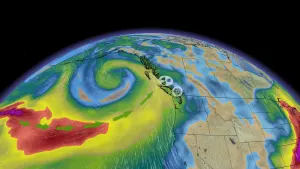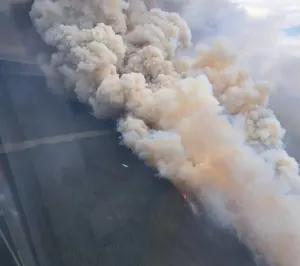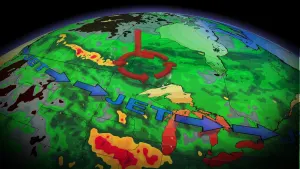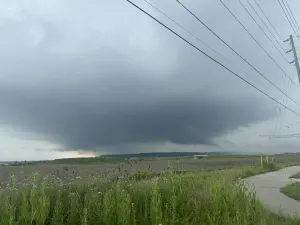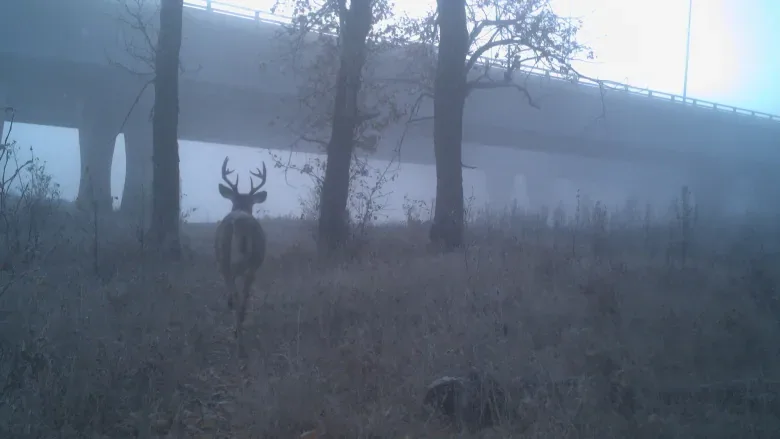
Wildlife cameras under ring road examine how animals travel after construction
In the loose dirt, it's easy to spot the footprints — deer, coyote and the occasional moose — all marking the same path along the meandering Elbow river, between the Tsuut'ina Reserve and Weaselhead Flats.
Researchers at the Miistakis Institute consider this one of Calgary's crucial wildlife corridors and one they are watching closely as it's where the southwest ring road crosses the Elbow River.
SEE ALSO: How wildlife corridors can reconnect Canada's fractured habitats
The group wants to know, with Highway 201 now crossing the river, will animals still use this corridor? They began setting up wildlife cameras last year to snap pictures of any critters moving through and will be analyzing the data after gathering at least two years' worth of photos.

Deer are one of the most prevalent animals wandering under Tsuut'ina Trail S.W. (Submitted by the Miistakis Institute)
It's a case study that the institute's conservation analyst Nicole Kahal hopes can be shown to government officials and planners — one that delivers a message.
"The hope is that we will eventually make decisions about where we develop differently, that we will consider ecological connectivity before we start to develop," Kahal said.
The bridge connection turned controversial in 2017 when residents got a glimpse of the initial design and filed letters with the province's Environmental Appeals Board. The bridge span, people argued, was too narrow and posed a risk to wildlife and homes should a flood rush through the area.
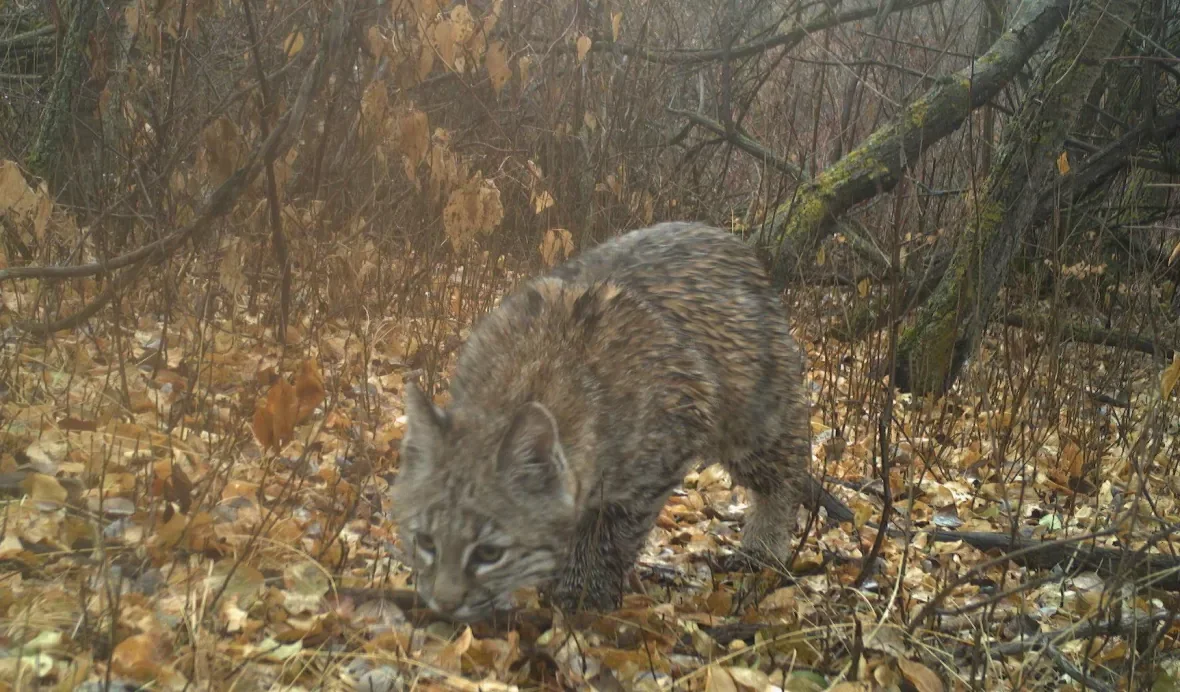
A bobcat kitten explores the fall foliage in the Weaselhead. (Submitted by the Miistakis Institute)
By the time the southwest ring road opened to traffic in 2021, the bridge's design had change to an open-span bridge. The province added some mitigation measures underneath in an effort to coax animals through the important corridor.
Those measures are part of what Kahal is examining: the wildlife fencing that stops animals from heading up onto the road (known as Tsuut'ina Trail for this section), the vegetation animals are using for cover and the wider bridge span's role in keeping that route into the Weaselhead open.
Kahal wants to know what works and what doesn't, to better understand where investments are needed or worthwhile.
So far, Kahal said, animals are continuing to wander under the bridge despite the traffic noise that's now overhead.
WATCH: How a map could help keep mammals protected
"A lot of black bears have been seen. Moose, bobcat, deer and coyote are definitely the most common that we see," Kahal said.
Finding the best spot for wildlife cameras, swapping out memory cards and monitoring them usually falls on Sara Jordan-McLachlan. She's the project co-ordinator with Calgary Captured. It's a citizen science wildlife monitoring project that Miistakis and the City of Calgary partner on.
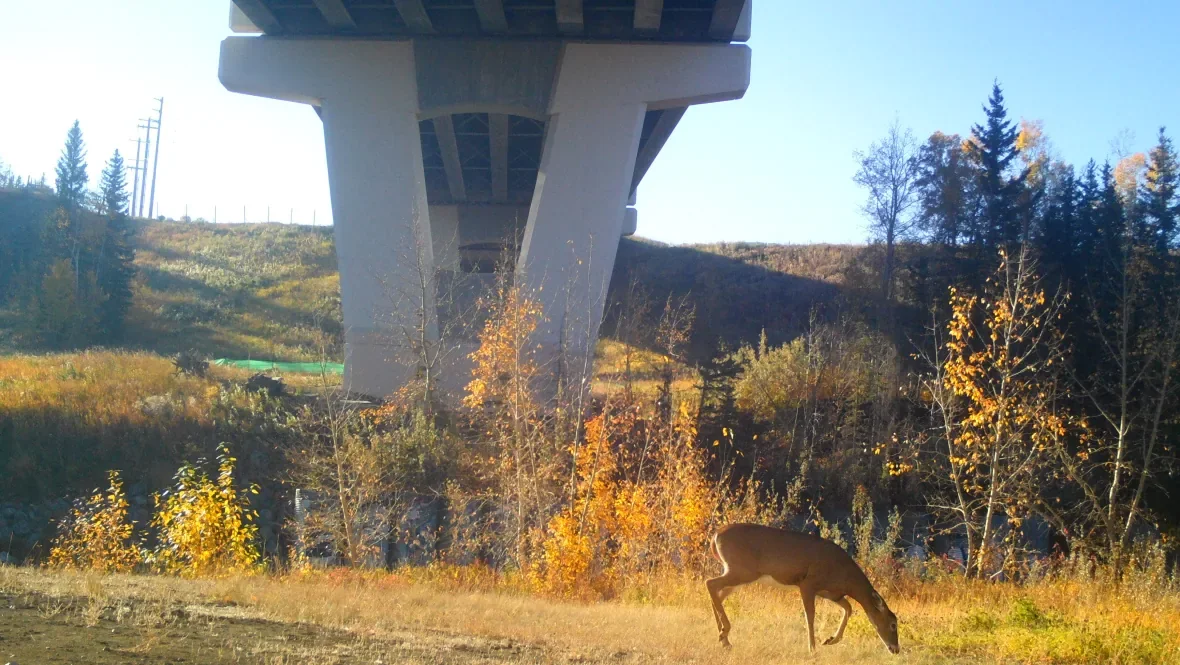
The southwest ring road opened to traffic in 2021. The crossing's original design was changed to an open-span bridge, and the province added some mitigation measures underneath in an effort to coax animals through the important corridor. (Submitted by the Miistakis Institute)
"If you find a really well-used game trail or if you are seeing tracks like we did down there, that's a good opportunity to put a camera, for sure," she said.
This week, she's down under Tsuut'ina Trail looking for a camera that's gone missing.
"We put one of them on a freshly planted aspen tree that was put there by the province," said Jordan-McLachlan. "Unfortunately, when I came back to check it, it had been taken down by a beaver."
It hurts to lose equipment, Jordan-McLachlan said, but beavers love aspen and willow trees, and those trees were planted without wire shrouding to stop the dam-building rodents from chomping them down.
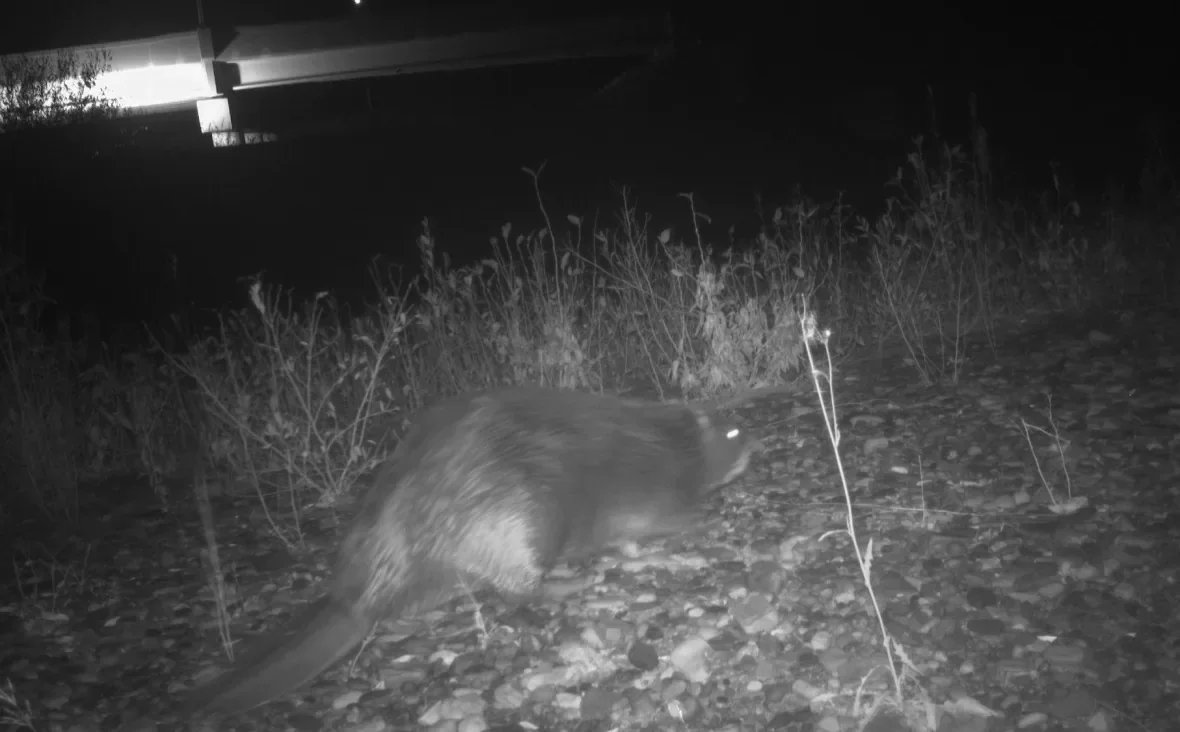
A beaver photographed by a wildlife camera near the Tsuut'ina Trail bridge. (Submitted by the Miistakis Institute)
"It's the first time beavers made off with our camera, so it's kind of hilarious and I wish we could find the camera to see the footage," Jordan-McLachlan said.
The incident is also an interesting indicator: there are beavers under the bridge. Perhaps it's become a new habitat.
Jordan-McLachlan said beavers tend to harvest trees close to their dams, so this could be a sign that a number of them have moved to the Elbow from nearby Beaver Pond, which Jordan-McLachlan said has recently gone dry.
"There have been a lot of changes to their habitat inside of the park with the construction of the road," Jordan-McLachlan said. "It could be either their populations are increasing and they're moving into new areas or they're moving in response to the changes in the park as well — unknown at this point."
WATCH: Why business is booming at one Ottawa turtle hatchery
The story, written by Helen Pike, was originally published for CBC News.






